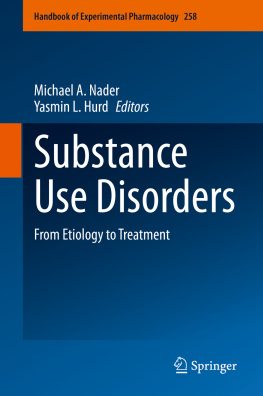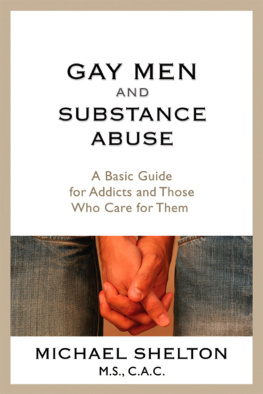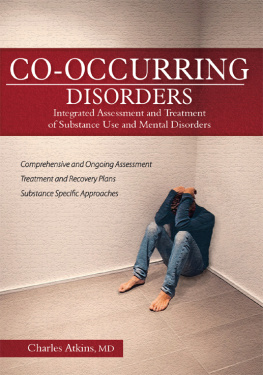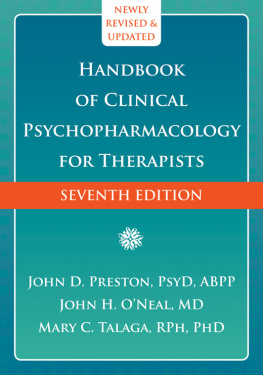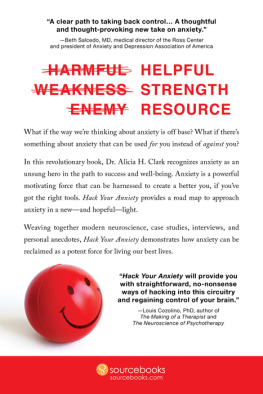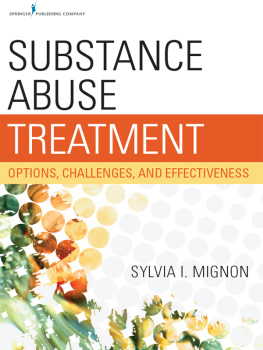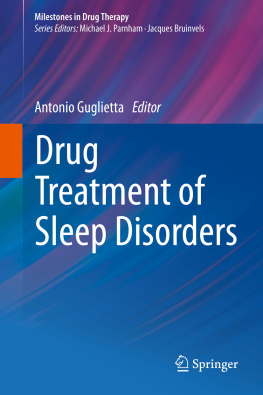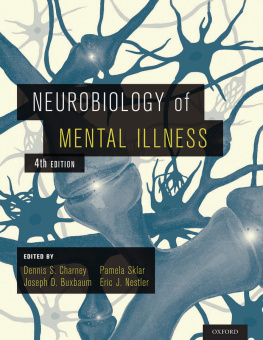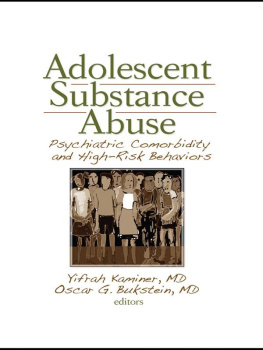Michael A. Nader - Substance Use Disorders: From Etiology to Treatment
Here you can read online Michael A. Nader - Substance Use Disorders: From Etiology to Treatment full text of the book (entire story) in english for free. Download pdf and epub, get meaning, cover and reviews about this ebook. year: 2020, publisher: Springer Nature, genre: Politics. Description of the work, (preface) as well as reviews are available. Best literature library LitArk.com created for fans of good reading and offers a wide selection of genres:
Romance novel
Science fiction
Adventure
Detective
Science
History
Home and family
Prose
Art
Politics
Computer
Non-fiction
Religion
Business
Children
Humor
Choose a favorite category and find really read worthwhile books. Enjoy immersion in the world of imagination, feel the emotions of the characters or learn something new for yourself, make an fascinating discovery.
- Book:Substance Use Disorders: From Etiology to Treatment
- Author:
- Publisher:Springer Nature
- Genre:
- Year:2020
- Rating:5 / 5
- Favourites:Add to favourites
- Your mark:
- 100
- 1
- 2
- 3
- 4
- 5
Substance Use Disorders: From Etiology to Treatment: summary, description and annotation
We offer to read an annotation, description, summary or preface (depends on what the author of the book "Substance Use Disorders: From Etiology to Treatment" wrote himself). If you haven't found the necessary information about the book — write in the comments, we will try to find it.
Substance Use Disorders: From Etiology to Treatment — read online for free the complete book (whole text) full work
Below is the text of the book, divided by pages. System saving the place of the last page read, allows you to conveniently read the book "Substance Use Disorders: From Etiology to Treatment" online for free, without having to search again every time where you left off. Put a bookmark, and you can go to the page where you finished reading at any time.
Font size:
Interval:
Bookmark:

The TheHandbook of Experimental Pharmacologyis one of the most authoritative and influential book series in pharmacology. It provides critical and comprehensive discussions of the most significant areas of pharmacological research, written by leading international authorities. Each volume in the series represents the most informative and contemporary account of its subject available, making it an unrivalled reference source. is one of the most authoritative and influential book series in pharmacology. It provides critical and comprehensive discussions of the most significant areas of pharmacological research, written by leading international authorities. Each volume in the series represents the most informative and contemporary account of its subject available, making it an unrivalled reference source.
HEP is indexed in PubMed and Scopus.
More information about this series at http://www.springer.com/series/164

This Springer imprint is published by the registered company Springer Nature Switzerland AG.
The registered company address is: Gewerbestrasse 11, 6330 Cham, Switzerland
Drug abuse continues to be a major public health problem worldwide contributing to extensive morbidity and mortality that have tremendous economic and human costs. Many Western countries have seen a dramatic increase in the use of opioid drugs where, for example, in the USA the use of both prescription and illicit opioids have contributed to the death of over 300,000 people in the past decade (Center for Disease Control 2018). Many communities are now experiencing a new wave of cocaine and other stimulant use as well as the emergence of synthetic drugs. While much attention is given to illegal drugs, the two prominent legal substances, tobacco and alcohol, continue to exert the biggest threat to human health worldwide with an estimated 143.7 deaths per 100,000 people per year (Peacock et al. 2018). Another drug that now straddles the legal and illegal markets is cannabis where dramatic sociopolitical changes in many countries have led to the legalization of medicinal and recreational cannabis. The societal and health consequences of these policy changes are still unknown, but what is clear is that similar to other drugs, cannabis can lead to a pathological use disorder for which there are limited treatment options. Disturbingly, there are today still few available treatments for substance use disorders (SUDs). The growing use of drugs combined with the low-risk perception of the harm of these substances in society has raised significant alarm and brought renewed awareness of the critical need for advanced knowledge about the effects of these psychoactive drugs on the brain that can guide the development of much needed new treatment strategies to save lives.
The primary problem facing clinicians treating individuals with SUD is relapse (OBrien and Anthony 2005). In fact, relapse rates have remained unchanged over the last 40 years (Dong et al. 2017). It has been noted (Humphreys and Bickel 2018) that there are common neuroadaptations across SUDs, but there are still significant gaps of knowledge about how these common neural pathways and circuits contribute to relapse vulnerability, as well as whether and how they recover during long-term abstinence. There is also a wide range of individual differences in behavioral and neurobiological responses to chronic drug abuse; these differences manifest themselves during recovery attempts, with some people having a greater ability to maintain abstinence than others. Clearly, more research is needed to understand these individual differences in attempts to develop a personalized treatment strategy for SUDs.
The goal of this volume is to describe innovative basic science and clinical research focused on various drugs of abuse given their critical impact in many communities today. The first three chapters provide overviews of research techniques: population-based research, molecular techniques, and small-molecule chemistry. The remaining chapters focus on (1) molecular mechanisms, (2) preclinical behavioral pharmacology, and (3) clinical pharmacology for opioids (mu and kappa receptor), stimulants (cocaine and amphetamines), marijuana, nicotine, alcohol, and newly emerging substances of abuse. Together, these chapters bridge preclinical and clinical behavioral pharmacology in expanding knowledge about the current state of the field.
Recent advances in developing novel opioid analgesics from an understanding of mu receptor structure and function, including the study of biased agonists;
Drugs acting at mu opioid receptors, including abused opioids, can vary on a number of dimensions, including pharmacological efficacy, drug-receptor interactions, receptor selectivity, and pharmacokinetics; these differences impact the behavioral effects of drugs acting at mu opioid receptors;
Individual differences are a hallmark of SUD. In fact, most people that try drugs do not become dependent on them. The neurobiological and genetic underpinnings of individual differences in vulnerability are discussed;
Font size:
Interval:
Bookmark:
Similar books «Substance Use Disorders: From Etiology to Treatment»
Look at similar books to Substance Use Disorders: From Etiology to Treatment. We have selected literature similar in name and meaning in the hope of providing readers with more options to find new, interesting, not yet read works.
Discussion, reviews of the book Substance Use Disorders: From Etiology to Treatment and just readers' own opinions. Leave your comments, write what you think about the work, its meaning or the main characters. Specify what exactly you liked and what you didn't like, and why you think so.

